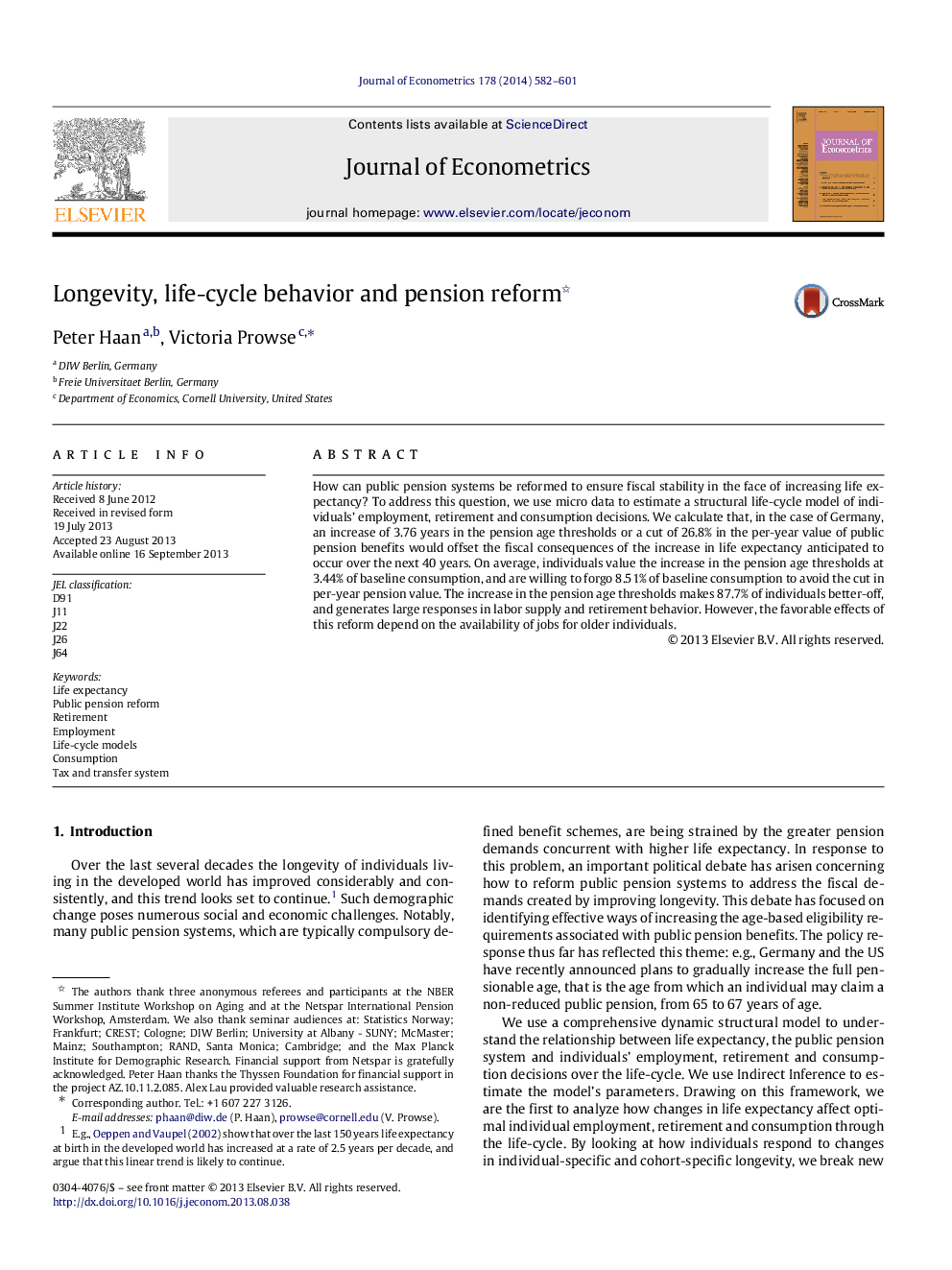| Article ID | Journal | Published Year | Pages | File Type |
|---|---|---|---|---|
| 5096152 | Journal of Econometrics | 2014 | 20 Pages |
Abstract
How can public pension systems be reformed to ensure fiscal stability in the face of increasing life expectancy? To address this question, we use micro data to estimate a structural life-cycle model of individuals' employment, retirement and consumption decisions. We calculate that, in the case of Germany, an increase of 3.76 years in the pension age thresholds or a cut of 26.8% in the per-year value of public pension benefits would offset the fiscal consequences of the increase in life expectancy anticipated to occur over the next 40 years. On average, individuals value the increase in the pension age thresholds at 3.44% of baseline consumption, and are willing to forgo 8.51% of baseline consumption to avoid the cut in per-year pension value. The increase in the pension age thresholds makes 87.7% of individuals better-off, and generates large responses in labor supply and retirement behavior. However, the favorable effects of this reform depend on the availability of jobs for older individuals.
Related Topics
Physical Sciences and Engineering
Mathematics
Statistics and Probability
Authors
Peter Haan, Victoria Prowse,
